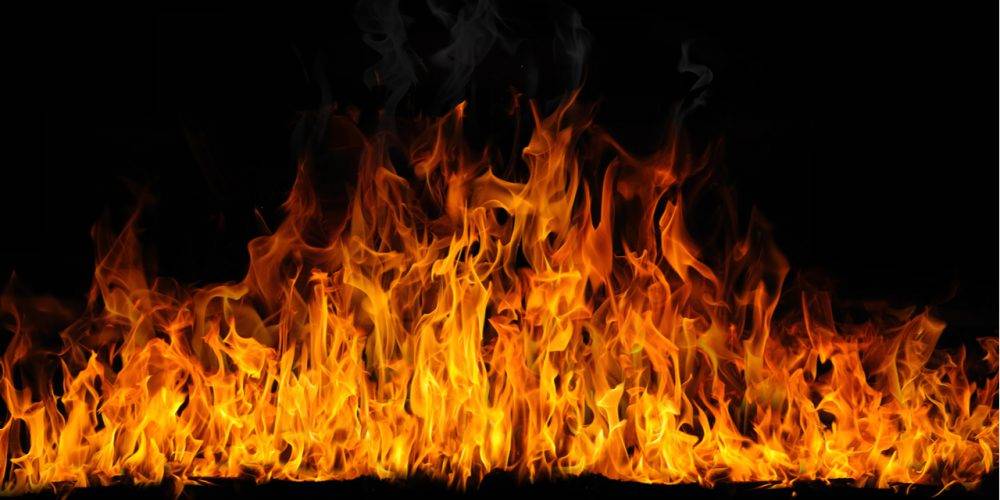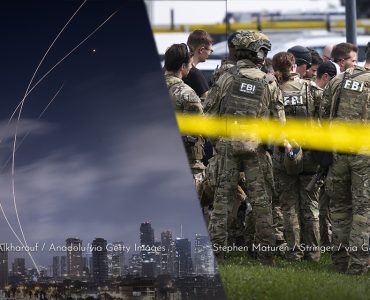From “truthers” and “birthers,” and from Flat Earthers to “QAnon,” so-called conspiracy theorists have been garnering more and more attention, especially because President Donald Trump himself has been known to promote this kind of baseless speculation. While it is hard to find evidence that more people than usual have been engaging in such speculation, this doesn’t make the phenomenon, or its effect on the level of rational discourse, any less of a concern.
I have been a critic of conspiracy mongering in various forums. I’ve argued that one flaw with the practice is that it explains events by reference to hidden agendas of nefarious agents when appealing to the conventional motives of ordinary public figures can do the job. But I’ve often been asked, how can we tell when there’s something irrational about a given “conspiracy theory”? Don’t conspiracies sometimes really happen? How can we know when we’re dealing with conspiracy mongers?
These are good questions, and I’ve wanted for some time to answer them by doing an in-depth case study of a single, prominent case of baseless speculation about conspiracies. But often the cases are so wacky that it would insult people’s intelligence to dwell on them. So I wanted to find a seemingly plausible example, preferably one about a recent, well-known event. It would be even better if we could watch the speculation happen in real-time as the event unfolded.
Unfortunately, I knew I would have the right case study when the Notre Dame cathedral in Paris caught fire six months ago, on April 15, 2019. An iconic landmark was burning, and immediately I myself wondered if it would turn out to be terrorism. Especially because Paris has been the target of some brutal Islamist terrorist attacks in the last seven years (notably including the 2015 attacks on Charlie Hebdo and the Bataclan), I knew that some people would leap to the conclusion that this was another such case.
Indeed, as I watched commentary about the event pour in on social media, I began to see some posters conclude that it was not only possibly but even probably or certainly an act of Islamist terrorism. Their commentary, which spread as quickly as the fire itself, displayed all the hallmarks of the conspiracist mindset. In what follows I’ll illustrate how people with this mindset fixated on one imagined scenario, and how they twisted logic to do it. I’ll also draw some general lessons about how to avoid this mindset.
Leaping to conclusions
Breitbart.com’s first article reporting on the fire became a repository of commentary on the event by readers, racking up a total of almost 24,000 comments. There are many other sites I could have looked at, but after many dispiriting months of reading Breitbart comment sections, I knew this would be a tinder-dry environment for conspiracist sparks to catch.
Even now, six months after the event, no one is in a position to be certain about how this fire started. But French investigators have been working diligently and have not found evidence of foul play.4 A recent in-depth piece by the New York Times brings us up to date: we now know that a security guard paid to check fire alarms rushed to the wrong section of the building, giving the fire nearly 30 minutes to spread in the main attic of the church where it had actually started. The main possibilities being considered are an electrical short in the bell tower or in an elevator for workers, or cigarettes from workers. Even Breitbart has now reported this much, but the conspiracists in the comment section are unimpressed.
I want to be very clear: I am not claiming that the fire was an accident. The investigation is still ongoing. Evidence of foul play can sometimes emerge only late in an investigation. But such evidence has not yet emerged. Even if it eventually does, this will not validate the breathless claims about Islamist terrorism that emerged immediately after the fire.
It is important to distinguish real theories and real hypotheses from what are commonly called “conspiracy theories.” A theory is a sophisticated, systematic organization of evidence, a real intellectual achievement. Even to form a valid hypothesis about a matter, you first need to know a lot. The intellectual monstrosities constructed without attention to the evidence that are often dubbed “conspiracy theories” are nothing of the sort. They don’t even qualify as valid hypotheses.
Of course sometimes conspiracies really happen, and evidence can be collected in a systematic way to support the claim that they exist. A “conspiracy” is just a secret plot by two or more parties to carry out some objective. Notably, the generally accepted explanation for the 9/11 attacks is that Al Qaeda operatives conspired to undertake a coordinated attack on American civilian and military targets. A host of evidence is available to support the existence of this conspiracy.But baseless claims about conspiracies tend to attract “crackpots” precisely because they are claims about secret plots. It is all too easy to claim that the reason there is no evidence for a conspiracy is that the conspirators have worked to cover it up. When claims about secret plots or coverups spread quickly, before there is time for the evidence to come in, it’s a good early sign — like smoke where there’s fire — that the claims spreading are mere conspiracism. This is the proper pejorative term to describe the phenomenon of asserting baseless claims about the existence of conspiracies.
The sheer absence of evidence
Conspiracism thrives on mysteries. It posits explanations for events that are actually difficult to explain, but it does not actually engage in the painstaking effort of gathering evidence in the way that scientists do. Case in point: Notre Dame conspiracists have failed to offer a scintilla of evidence that is actually relevant to establishing the claim that the fire was due to Islamist terrorism or even just arson.
What’s more, if the French government knows that there was arson and is lying about it, this is an allegation that itself would need evidence. There have in fact been crimes by Muslims that various European police agencies have suppressed, as in the 2015–2016 New Year’s Eve sexual assaults in Germany. We know about that because evidence of conflicting internal reports emerged. No such evidence has emerged in connection with Notre Dame. Until specific evidence of distortion or equivocation on behalf of the French police arises, this speculation is baseless.
Very typically, conspiracists will take the difficulty of explaining an event as a sign of foul play. They can’t understand how an iconic structure could burn by accident: wouldn’t authorities have taken precautions against this? But the absence of an explanation is simply ignorance, and ignorance per se isn’t evidence of anything. Usually, conspiracists lack context and understanding because they don’t have the relevant expertise, or they don’t realize that certain kinds of knowledge even require expertise. Conspiracism all too often results from an indefensible antipathy to the very idea of specialized knowledge.
Irrelevant “evidence”
Conspiracists will often point to real facts and claim that these form evidence for their views. But evidence for a claim is a fact that in logic tends to support that claim. The facts conspiracists point to tend to bear only an illusion of relevance to their conclusions, an illusion driven by wishful thinking.
An elegant example of this conspiracist habit is the widely circulated claim that a mysterious figure in “Muslim garb” could be seen in grainy video footage moving through the Notre Dame bell tower as the fire raged.5 The claim is odd enough for assuming that a terrorist would stay on the scene of the crime dressed for evening prayers even as firefighters were swarming about. As usual, a much better explanation turned out to be available: Americans are unfamiliar with the uniform of French firefighters. Later, less grainy footage revealed it to be exactly that.6
Most of the apparent evidence that Notre Dame conspiracists mustered in the first place concerned not specific facts about the scene of the fire, but facts about the surrounding context of European life. They point to the indisputable fact that there is a problem with Islamist terrorism in Europe. And there have been real incidents of Muslim attacks, and other planned attacks, on French churches. But there are many fires in France, and doubtless many accidental ones at old churches — especially at those that lack fire suppression systems and are having to lay off security staff due to budget problems.7,8 What do such general facts help prove about the fire at Notre Dame?
To defend the claim that there is reason to think the Notre Dame fire was an Islamist attack, the web site Jihad Watch pointed to a story at Breitbart claiming that there is an “average of three church attacks per day” in France. Within a certain timeframe, that was true. But in a display of the conspiracist mentality’s lack of concern for the facts, one commenter on the Jihad Watch post jumps from this statistic (which included many cases of mundane vandalism) to the claim that there were as many “attacks on churches in France due to the religion of peace” [i.e., Islam]. In point of fact, nowhere in the Breitbart story or its French source are the perpetrators of these acts of vandalism identified.9
Perhaps sensing the need for some specific evidence, web sites like Alex Jones’s conspiracy-mongering Infowars relayed the news that a journalist had tweeted that a friend of his who works at Notre Dame had told him that other staff at the cathedral told him that the fire was intentional.10 Aside from the fact that this does not specify who is supposed to have set it intentionally, it is readily classifiable as hearsay about hearsay, so it is no surprise that the journalist eventually deleted the unreliably sourced tweet.
The closest thing there is to specific evidence of anything like foul play at Notre Dame is a fact very few of the conspiracist commenters saw fit to reference. It is true that several Muslims were arrested in 2016 on the suspicion of plotting an attack against Notre Dame. One of them, a woman who aspired to join ISIS, was sentenced just days before the Notre Dame fire itself.11
This is an interesting coincidence. A sensible detective might take it as a cue to look further into the woman’s associates and sympathizers, to check their whereabouts during the fire. If the results of such an investigation were to reveal, for instance, that someone inspired by the woman or her ideas had the means, motive, or opportunity to start the fire, then we could begin to think arson by one of these people was a possibility.In the meantime, without such evidence, looking at statistics about attacks by Muslims in France and seeing a case for Islamist terrorism at Notre Dame is little better than squinting at grainy footage and seeing the vague outlines of a mysterious figure in “Muslim garb.”
Shifting, contradictory, and made-to-order claims
One additional hallmark of conspiracists’ disregard for the pursuit of the truth is that their claims have no clear identity. The content of their assertions shifts as new evidence comes in, sometimes in a way that blatantly contradicts their previous claims.
For instance, consider the idea that the French authorities would not disclose the fact that Muslim terrorists were responsible for the fire even if they actually did discover indisputable evidence of an Islamist attack. At the same time, when conspiracists want to show that some Muslims have planned or executed church attacks in France, they appeal to the reports of French authorities.12
The standards shift and the claims contradict because their source is not evidence, but imagination. It is easy to hear the reports of an investigator and simply imagine, what if they’re lying? A similar use of the imagination is the attempt to explain how a proposed arson might have occurred. How was the fire started? It could have been workers, they say, because we can imagine workers starting fires. Were any of the workers Muslims? We can imagine the companies being pressured to hire a group of diverse workers, they say.14 What if all of the workers claim to be Catholics? We can imagine they are lying, and they are secretly Muslim.15 How could the arson have been carried out if the workers weren’t present? We can imagine it was incendiary balloons!16 Or even better, we can imagine an improvised incendiary drone!17
The use of arbitrary “possibilities” is one of the most classic hallmarks of conspiracism. Even to say “maybe” with a serious face, in the manner that a detective identifies and investigates the suspect of a crime, requires at least a little bit of specific evidence, otherwise it too is arbitrary. Arbitrary possibilities devised by the imagination in defiance of the need for evidence are the stock-in-trade of the conspiracist. They are what allow any fact to be evidence of anything the conspiracist would like, allowing their claims to shift with the wind. They are, in particular, what allows the conspiracist to insulate his case from refutation. The authorities say there is no evidence of terrorism? Maybe they are lying. But this is the argumentation of a shyster lawyer, not an investigator who is serious about the truth.
Dangerous kindling for conspiracism
What creates the conditions for conspiracism to spread? There are many factors, but one should be highlighted in particular.
In the case of the Notre Dame fire, we have already seen how some European authorities have been less than transparent about the challenge of the recent influx of Muslim immigrants into the region after the Syrian civil war. Much of the Western press has aided and abetted this reticence: it has under-covered the extent of the problem with Islamist terrorism both in Europe and around the world. Several publications even insisted that French authorities had “ruled out” arson and terrorism.18 But the most the Paris prosecutor Rémi Heitz said was: “There is no indication that this was a deliberate act.”19 This only means that no specific evidence was found pointing to terrorism or arson, not that these had been ruled out.
But as one commentator recently put it:
Progressive bias in the mainstream media is quite real and has been getting markedly worse in recent years. . . . But this does not justify claiming that the New York Times or CNN are just as bad as Alex Jones’s conspiracy site, Infowars, or embracing the pro-Trump camp’s assertions that mainstream coverage of the Trump/Russia story amounted to a ‘hoax.’
Even as we must be willing to identify non-objective reporting, we must not fall for the siren song of conspiracism as the alternative. The only acceptable alternative is to be objective about our interpretation of the news.
Have a question? Send it to us.
Share this article:
Do you have a comment or question?
Endnotes
- Comment by DocDrew on “Paris: Notre-Dame Cathedral Burns, Charred Timbers of Medieval Spire Collapse,” Breitbart.com, April 15, 2019, 17:33 UTC.
- Comment by Ohm on “Paris: Notre-Dame Cathedral Burns, Charred Timbers of Medieval Spire Collapse,” Breitbart.com, April 15, 2019, 17:36 UTC.
- Comment by TJ on “Paris: Notre-Dame Cathedral Burns, Charred Timbers of Medieval Spire Collapse,” Breitbart.com, April 15, 2019, 18:16 UTC.
- In a statement issued on June 26, 2019, prosecutor Remy Heitz announced that his investigation found “no evidence to support the hypothesis of a criminal origin.” The investigators did not claim to determine the actual causes of the fire, but indicated they were investigating “a malfunction of the electrical system or a start of fire caused by a badly extinguished cigarette” (LCI.fr, June 26, 2019). According to the Prefecture of Police, the debris at the scene contained “no trace of oil or flame retardants,” nor was there evidence to support the hypothesis of an “external intrusion” (“Notre-Dame de Paris : l’incendie Aurait été Causé Par Une Série de Négligences,” Atlantico.fr, June 19, 2019). The Prosecutor of the Republic also issued a communique indicating that “the work of removing the sculptures that took place four days before the fire, with the probable use of torches and electric saws, especially to dislodge sculptures and remove their heads, should also be considered as possible cause” (“L’avancée de l’enquête sur l’incendie de Notre-Dame de Paris,” latribunedelart.com, June 26, 2019).
- Samantha Putterman, “No, There Was Not a Man ‘Dressed in Muslim Garb’ Walking in a Notre Dame Tower During the Fire,” Politifact, April 16, 2019.
- “Notre-Dame de Paris : Deux Images Intrigantes Pendant l’Incendie,” Le Monde YouTube channel, April 16, 2019.
- The broader-ranging statistical evidence about vandalism against churches would tell us something specific about Notre Dame only if it indicated that a very high percentage of the attacks were perpetrated by Muslims in comparison to other possible perpetrators. In particular it would need to identify the base rate of arson that can be expected independently of Islamist attacks. According to at least one source, 2019’s rate of church vandalism in France was actually lower than 2018’s (though 2019 did feature some particularly shocking acts). Here is Snopes.com: “In fact, that rate — less than one incident per day — actually appears to be relatively low, compared to figures available for 2018. According to data provided by two official sources (France’s Interior Ministry and the national police), around 700 to 877 acts of vandalism occurred at Christian places of worship in France in 2018, a rate of 1.9 to 2.4 per day. Breitbart described a pattern which, depending on how you break it down, constituted five incidents in a seven-day period (3–10 February) or seven incidents in a 17-day period (25 January to 10 February). That’s a rate of between 0.4 and 0.7 incidents per day, significantly lower than the average over the course of 2018.”
- To indicate the specific idea that Notre Dame was any kind of arson, the statistics would also need to be significantly higher than the base rate of accidental fires we should expect among 800-year-old churches built without firewalls or fire suppression systems, in a time when ranks of believers have worn so thin that even iconic churches like Notre Dame will suffer from budget problems and have to lay off fire security staff. See more here about the absence of a fire suppression system at Notre Dame, and about its budget problems and layoffs.
- Breitbart cites a report from the French paper Le Figaro claiming that “from 2016 to 2018 there had been thousands of cases of church vandalism, peaking in 2017 with 1,045 cases.” Breitbart notes a specific report about how one of these thousands of cases happened in a Parisian suburb that is heavily populated by immigrants, and another report that Romanians were arrested for thefts from a church. The only Muslims specified in the Breitbart story are one who was arrested for threatening to blow up a cathedral, and those who presumably (but not definitively) spray painted “Allah ou Akbar” on a church that was partially burnt.
- Paul Joseph Watson, “Notre Dame Cathedral in Paris on Fire, Worker Claims It Was ‘Deliberately’ Started,” Infowars.com, April 15, 2019.
- Peter Allen, “Car Packed with Explosive Gas Cylinders and Left Near Paris’s Notre Dame ‘Belonged to Radicalised French Woman Who Wanted to Join ISIS’,” Daily Mail, September 7, 2016; “France Jails ‘Jihadist’ Woman (22) Accused Over Foiled 2016 Terror Attack in Paris,” TheJournal.ie, April 12, 2019.
- Robert Spencer, “France: Muslim Arrested After His Car Is Found Packed with Explosive Gas Cylinders Outside Notre Dame Cathedral,” JihadWatch.org, September 7, 2016.
- Brendan Cole, “After Notre Dame, Priest of Church Damaged by Arson Warns against ‘Conspiracy Theories’,” Newsweek, April 18, 2019.
- Comment by Nicola Timmerman on “Notre Dame Fire: No Workers Were in the Cathedral, No Heat Sources Were Near the Timber Frame,” JihadWatch.org, April 17, 2019, 20:32 UTC.
- Comment by Mortimer on “Notre Dame Fire: No Workers Were in the Cathedral, No Heat Sources Were Near the Timber Frame,” JihadWatch.org, April 17, 2019, 20:57 UTC.
- Comment by mummymovie on “Notre Dame Fire: No Workers Were in the Cathedral, No Heat Sources Were Near the Timber Frame,” JihadWatch.org, April 18, 2019, 5:03 UTC.
- Comment by mummymovie on “Notre Dame Fire: No Workers Were in the Cathedral, No Heat Sources Were Near the Timber Frame,” JihadWatch.org, April 18, 2019, 5:07 UTC.
- NBC, Time, and the Associated Press claimed that officials had “ruled out” arson.
- Time cites this source in French. See Deutsche Welle for a different translation: “Nothing suggests that it was a voluntary act . . . . We are favoring the theory of an accident.”







